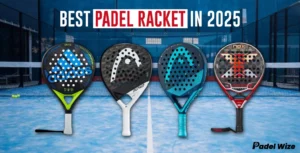Organizing a padel tournament can be a rewarding experience, bringing together players of all skill levels to enjoy the game and compete. However, the key to a successful event lies in careful planning, especially when it comes to selecting the right format for your players. Here’s a guide on how to organize a successful padel tournament, focusing on choosing the best format to enhance the experience for everyone involved.
Related blog Padel Tournament Formats Explained: Round Robin vs. Knockout – Which Is Better?
Understanding Padel Tournament Formats
Before diving into the specifics, it’s essential to understand the various formats available for padel tournaments. The choice of format can significantly affect player enjoyment, competitiveness, and overall event flow. Here are some popular options:
1. Round Robin
In a round-robin format, each team plays against all other teams in their group. This ensures that every participant gets multiple matches, making it ideal for social tournaments where the emphasis is on fun rather than just winning.
Pros:
- All players get to play multiple matches.
- Players can improve by facing different opponents.
Cons:
- Time-consuming, especially with large groups.
- Can lead to ties, requiring tiebreakers to determine winners.
Related blog A Complete Guide to Padel Tournament Formats: Choosing the Right Structure for Your Event
2. Knockout
The knockout format features elimination rounds where teams compete in head-to-head matches. The winner of each match advances to the next round, culminating in a final.
Pros:
- Creates a sense of urgency and excitement.
- Easier to manage time-wise with fewer matches per team.
Cons:
- Players may feel disappointed after losing in the first round.
- Less overall playing time for each participant.
3. Swiss System
The Swiss system allows players to compete in a set number of rounds against different opponents, with rankings adjusted after each round based on performance. This format is commonly used in chess and is gaining popularity in padel.
Pros:
- Ensures competitive balance as players face opponents of similar skill levels.
- Keeps players engaged, as most participants get to play several matches.
Cons:
- Requires careful planning and ranking systems.
- May be less familiar to players who are used to traditional formats.
Related blog Organizing Successful Padel Tournaments and Events
4. Teams Format
In team-based tournaments, players form teams, and each match contributes to the overall score of the team. This format can be great for community building and encouraging camaraderie among participants.
Pros:
- Fosters teamwork and collaboration.
- Great for social engagement, making it fun for players and spectators alike.
Cons:
- May lead to imbalances if teams are not evenly matched.
- Scheduling can become complicated.
Factors to Consider When Choosing a Format
When choosing a tournament format, consider player skill levels and preferences to ensure an engaging experience. Additionally, factor in time constraints and the number of participants to maintain a smooth flow throughout the event.
1. Player Skill Levels
Understanding the skill levels of your participants is crucial. A mixed skill tournament might benefit from a round-robin format to ensure everyone gets a chance to play and improve, successful padel tournament while advanced players may enjoy the competitive nature of a knockout system.
2. Time Constraints
Consider how much time you have to run the tournament. A knockout format might be more suitable for a one-day event, while a round-robin could be ideal for a multi-day tournament where players can dedicate more time.
Related blog Unlocking the Secrets of Step Padel: Tips and Tricks for Success
3. Number of Participants
The number of players or teams can also dictate your format choice. Smaller groups may work well with a knockout or round-robin, while larger tournaments might benefit from the Swiss system to keep matches engaging and fair.
4. Player Preferences
Gather feedback from potential participants regarding their preferences for tournament formats. Some players may prioritize competition, while others may prefer a more casual experience. Tailoring the format to suit your players can enhance enjoyment and turnout.
Related blog What is Padel Sport? Key Facts and Tips for New Players
Conclusion
Selecting the best format for your successful padel tournament is crucial for its success. Whether you opt for round robin, knockout, Swiss system, or a team-based format, ensure that it aligns with the skill levels and preferences of your players. By thoughtfully considering these factors, you’ll create an engaging and enjoyable atmosphere that keeps everyone coming back for more.







